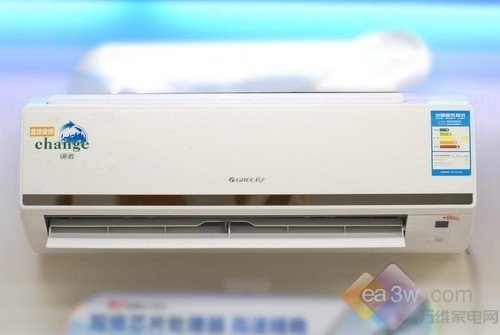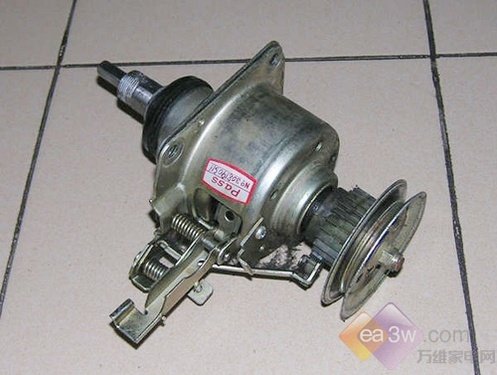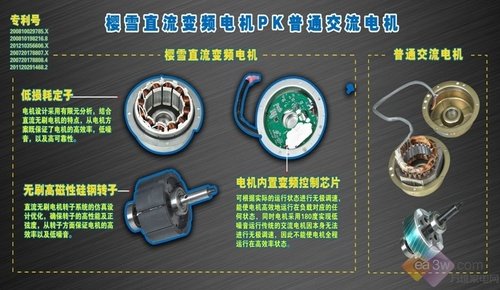In 2013, the electronic consumer exhibition in Berlin, Germany, came to an end. The author came to the exhibition to bring you many new and unique home appliances reports. If you are concerned about the IFA in 2013, then you will definitely find that energy saving is definitely the big theme of this IFA. In addition to the energy-saving atmosphere revealed at IFA, European energy conservation awareness is definitely worth learning. They feel that energy conservation is not only a personal behavior but also a social responsibility.

After the long-term development of home appliances, it has begun to struggle in terms of functional development and product design. From the energy-saving subsidy policy implemented by the state last year and the new energy efficiency standards to be implemented in October, China’s labeling of energy-efficient home appliances will be further improve. Under the new energy efficiency standards, perhaps the traditional fixed-frequency home appliances will bid farewell to the market, and the inverter home appliances will be fully marketed under the big waves. So what is the difference between inverter home appliances and fixed frequency home appliances? Today, the author will give you an analysis.
Frequency conversion technology is generally applied to home appliances with motors, such as air conditioners, washing machines, and range hoods that have only recently entered the field of frequency conversion. First of all, look at the advantages of home appliances that incorporate frequency conversion technology.
The application of frequency conversion technology in the field of air conditioning can be said to be very mature. Very early on, we already know that inverter air conditioners have more power than fixed-frequency air conditioners. Besides power saving, what are the advantages of inverter air conditioners? Let's first look at the difference between the two air conditioners.

Fixed-frequency air conditioner: China's grid voltage is 220 volts, 50 Hz, and the air conditioner operating under such conditions is called fixed-frequency air conditioner. Since the power supply frequency can not be changed, the compressor speed of the traditional fixed-frequency air conditioner is basically unchanged, and the compressor is constantly "on and off" to adjust the indoor temperature, which is easy to cause the room temperature to be hot and cold, and consumes. More power.
Inverter air conditioner: The main unit of the inverter air conditioner is automatically steplessly variable. It can automatically provide the required amount of cold (heat) according to the room condition. When the indoor temperature reaches the desired value, the empty host can accurately maintain this temperature. Constant speed operation for "no downtime" to ensure stable ambient temperature. The following highlights the advantages, purchase, installation and use of inverter air conditioners.
The difference between air conditioner frequency conversion and fixed frequency: In fact, the biggest difference between frequency conversion and fixed frequency air conditioner is that the application principle of the product on the compressor is different. The compressor of the frequency conversion product can be moderately adjusted in the case of long-term operation. If the indoor does not require a lot of hot and cold, the air conditioner will operate in a low frequency state, intelligent constant temperature control, and the fixed frequency product needs to be artificial. In the case of air conditioning, the hot and cold switch is adjusted.
Features of inverter air conditioner:
1, cooling, heating, strong and rapid
At startup, operate at the highest power. Rapid cooling and heating. Let the room temperature reach the set temperature at once. So whether it's a cold morning or a hot day, you can quickly enjoy a comfortable room temperature.
2, energy efficient
Since the inverter air conditioner is an "on-demand" Motor rotation mode, after the specified temperature is reached at room temperature, the compressor starts running at a low frequency, which not only reduces noise but also reduces energy consumption.
In the washing machine products, the frequency conversion technology is also applied very much. The whistle of the motor mainly reflected in the high-speed dehydration of the washing machine can be reduced by 10 to 20 decibels compared with the fixed-frequency washing machine, and since the frequency conversion is stepless speed regulation, the overall stability of the washing machine is ensured while saving energy. Below are several variable frequency motors that are often used in washing machines.

DD inverter motor
DD frequency conversion mainly means that the direct drive motor does not need to pass the transmission device (such as transmission belt, etc.) when driving the load. That is, the belt connection between the washing machine and the driving motor is not used. The main advantage of the direct drive motor is to avoid the use of transmission equipment such as transmission belts, which are precisely the parts with high failure rate in the system. Therefore, systems using direct drive motors should technically have a lower failure rate and reduce noise. There are brands such as LG and Sanyo that use this type of inverter motor.
SD plus core variable frequency motor
"SD core frequency conversion" technology has fundamentally improved the motor drive system. By eliminating the carbon brush on the traditional motor, the noise generated by the friction between the carbon brush and the converter during high-speed operation of the motor is eliminated, and the noise can be controlled at 50 decibels. the following. It also reduces the electromagnetic radiation of the motor by 30%. Compared with ordinary washing machines, it gives users a greener and healthier laundry experience. This kind of frequency conversion technology is widely used in Haier's washing machine. Haier and the United World's home appliance giant Fisher & Paykel jointly developed and upgraded the frequency.
BLDC brushless inverter motor
BLDC brushless DC motor, the machine is a kind of synchronous motor. The electronic commutator replaces the mechanical commutator, which not only has the characteristics of good speed regulation of the DC motor, but also has the advantages of simple structure, no commutating spark, reliable operation, easy maintenance and no noise in operation. The magnetic field generated by the stator has the same frequency as the magnetic field generated by the rotor, and the "difference frequency" problem common in induction motors is not encountered. This type of motor is widely used in Bosch's outdoor all-round series of washing machines to improve power performance and reduce noise.
Compared with the frequency conversion technology of white goods, the development of frequency conversion technology for range hoods started late, mainly due to the relatively late time for range hoods to enter Chinese home kitchens. As far as the current development trend is concerned, starting from October 1, five types of household appliances, such as range hoods, will begin to implement new energy efficiency standards. The energy efficiency standards for range hoods are formulated and implemented for the first time, under the new new energy efficiency standards. Leading brands that have the advantage of technology will benefit significantly, or will promote a new round of shuffling in the range hood industry.

In addition, due to the environmental problems of the Chinese kitchen, it also puts a new test on the motor performance of the range hood. The oil is formed between the stator and the rotor of the traditional fixed-frequency motor, and the motor will cause heat.
At present, the biggest difference between DC motor hoods and ordinary AC motor hoods is that DC motor hoods are more energy efficient and more efficient than AC motor hoods. The national standard first-class energy efficiency is 25%, and the general AC motor is difficult to achieve, and the full-voltage efficiency of the DC inverter motor hood is 32% higher than the national standard, that is, the DC inverter hood ratio The highest national standard is 7% higher, and energy saving is more than 30%.
In addition, the inverter controller is like the brain of the hood, and is also the comprehensive management center of the hood. It fully controls the distribution of various voltage and current parameters of the hood. Only by ensuring that the voltage and current parameters of the hood are more accurate. Extend the comprehensive service life of the hood.
Power Transformer,Dc Transformer,Control Transformer,Small Transformer
Shaoxing AnFu Energy Equipment Co.Ltd , https://www.sxanfu.com